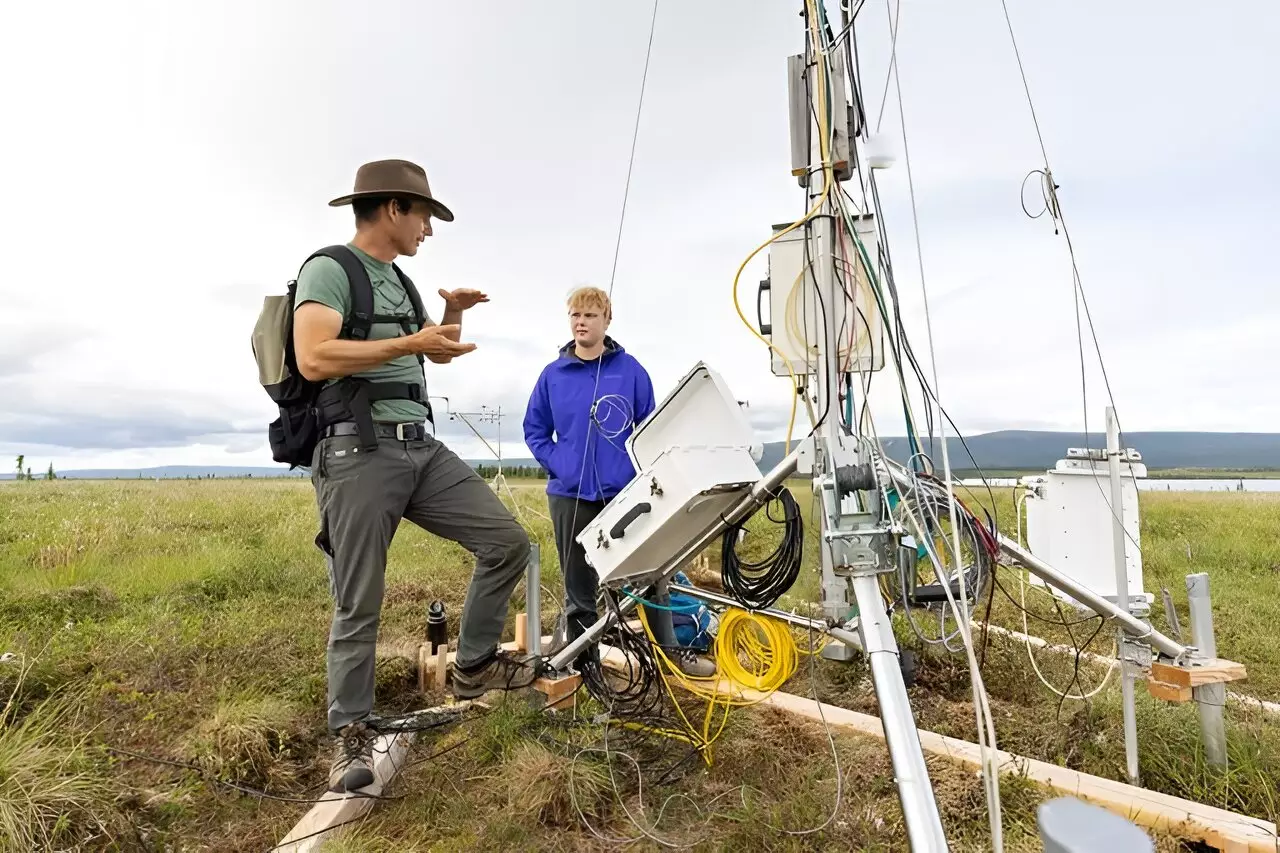The Arctic region, particularly the permafrost ecosystems, is often referred to as the Earth’s refrigerator—a vast reservoir trapping enormous amounts of organic carbon. Recent studies led by Ted Schuur, a prominent professor at Northern Arizona University, have unveiled alarming insights into how escalating temperatures are transforming these environments. With the permafrost warming at a pace three to four times that of the global average, the implications for future climate change are enormous. The Arctic, while covering only 15% of the world’s soil area, astonishingly holds nearly one-third of the earth’s soil organic carbon. This delicate balance threatens to spiral out of control, significantly contributing to greenhouse gas emissions if proactive measures are not immediately pursued.
The Dichotomy of Carbon Cycling
Carbon cycles through natural ecosystems in a delicate equilibrium of uptake and release. Plants absorb carbon dioxide (CO2), capturing it during photosynthesis, while ecosystem respiration, involving biological processes like decomposition, returns this carbon to the atmosphere. At present, the permafrost soils are losing carbon at an alarming rate, particularly during the summer months. Strikingly, a recent study published in *Nature Climate Change* highlighted that increasing temperatures have shifted the seasonal balance, leading to greater losses in the colder seasons than gains during the growing period. This critical observation challenges prior understandings of carbon dynamics in these unique ecosystems and raises urgent questions about their ongoing role in the broader climate crisis.
Unraveling Complex Ecosystem Feedbacks
The relationship between temperature and ecosystem respiration is nuanced, influenced heavily by local environmental factors like water availability and nutrient conditions. As found in another comprehensive study published in *Nature*, slight temperature increases have resulted in significant rises—up to 30%—in ecosystem respiration rates. Such findings underscore how changes in climatic conditions can have disproportionate impacts on carbon flux in the Arctic tundra, creating a web of feedback that accelerates climate change. This vessel of complexity suggests that merely mitigating human-induced greenhouse gas emissions may not suffice; understanding the interplay of these ecological dynamics is critical for shaping effective global climate policies.
The Global Implications of Local Climate Change
While the Paris Agreement aims to set international benchmarks for reducing greenhouse gas emissions, current projections often fail to account for the inexorable release of carbon from thawing permafrost. Schuur and his collaborators emphasize that emissions from this source could rival those of an industrialized nation by the year 2100, contributing an additional 10% to 20% to climate change. Therefore, the gap between the anticipated impact of permafrost emissions and existing global targets is a ticking time bomb that policymakers cannot afford to ignore. Rather than merely adhering to existing metrics, nations must adopt more ambitious strategies to offset these imminent threats.
A Call for Collaborative Research and Data Sharing
The urgency of understanding and addressing the rapid changes in the Arctic’s carbon dynamics cannot be overstated. Schuur’s networking initiatives, encapsulated by the Permafrost Carbon Network, promote vital data-sharing collaborations by uniting scientists across the globe. However, recent geopolitical events, like the Russian invasion of Ukraine, have highlighted the vulnerability of critical research initiatives. A significant portion of the Arctic carbon flux monitoring sites lay within Russia, which provides unique data sets not easily replicated elsewhere. Losing access to these sites means that half of the landscape variability information could be hindered, making insights into the Arctic’s role in climate change even more challenging.
The Path Forward: Bridging the Data Gap
As researchers navigate these turbulent waters, innovative approaches must be employed to gather comprehensive data sets. The potential establishment of new monitoring sites in North America could help to bridge some data gaps; however, they will not completely replace the unique ecological insights offered by Russian ecosystems. The path forward must focus on leveraging existing knowledge while innovatively adapting methodologies to capture the complexity of Arctic carbon dynamics, especially as climate change accelerates.
In pursuing an understanding of permafrost ecosystems and their consequential role in the climate crisis, interdisciplinary collaboration becomes paramount. The stakes have never been higher, as the revelations from the Arctic may dictate the future trajectory of our planet’s climate. Addressing and understanding these phenomena must become a priority, or we risk succumbing to an irreversible feedback loop exacerbated by ongoing warming in one of Earth’s last frontiers.


Leave a Reply